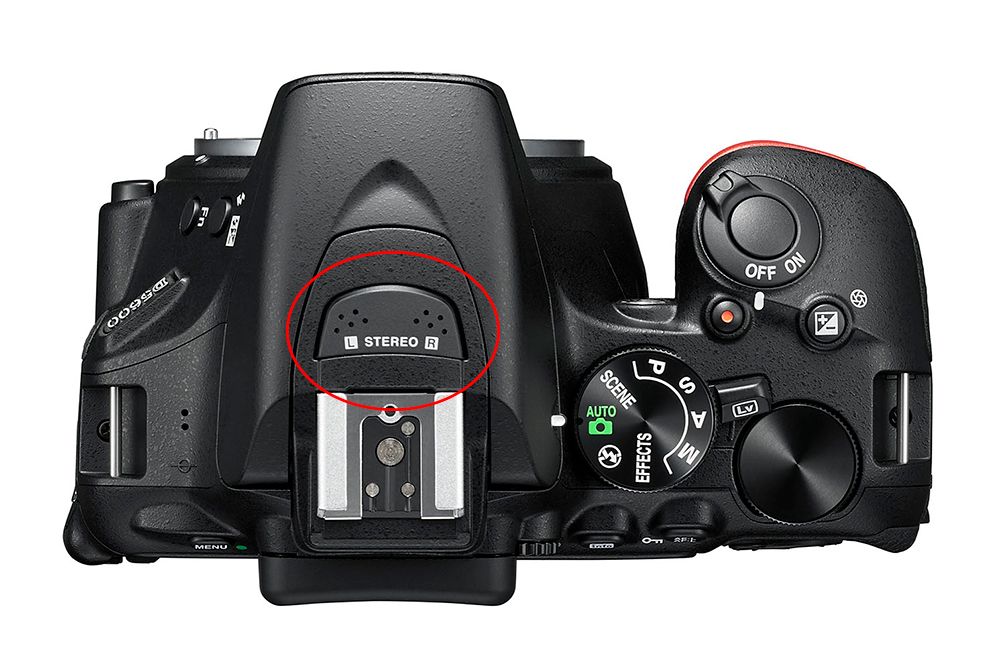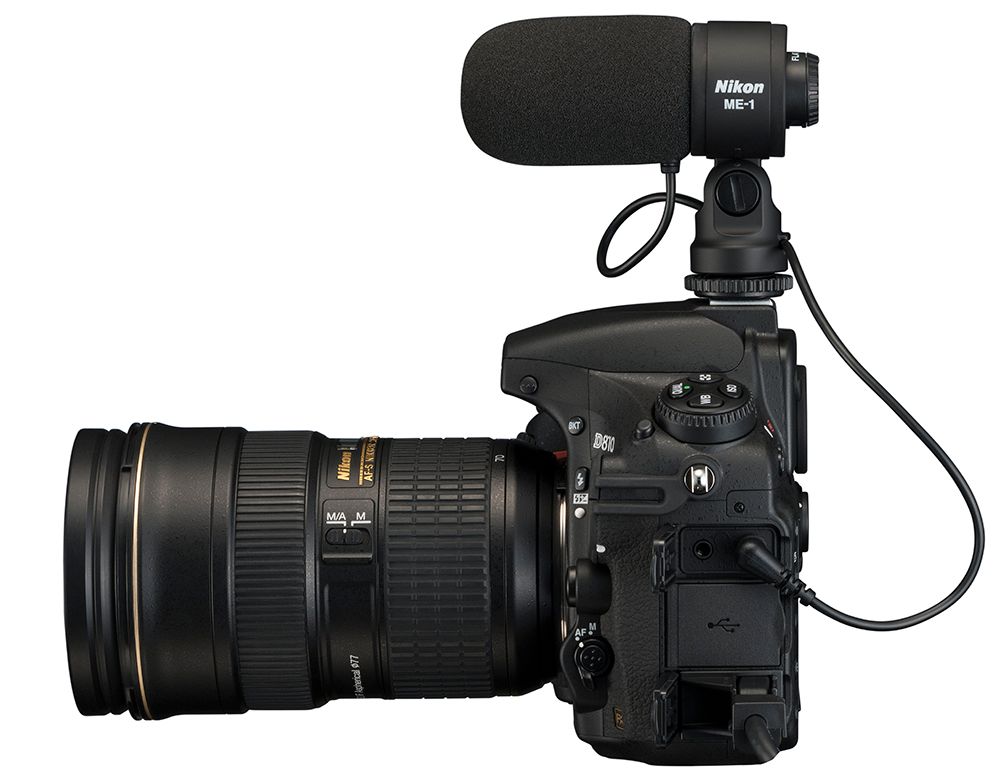It’s very easy to focus on the visual side of video production, but sound recording plays a huge role in the quality of the finished piece.
We sat down with our Rental Manager, Rob Gardner, and asked his advice on the basics of location sound recording.
Can you give us an idea of the basic kit needed to record professional quality sound on location?
In essence all you need is a means of gathering the sound with the highest fidelity – a microphone – and a means of capturing that sound, a recording device. The tools and techniques vary but at core it is that simple.
 Most video-capable DSLRs have built-in microphones. Some, like the Nikon D5600 pictured here, have stereo microphones.
Most video-capable DSLRs have built-in microphones. Some, like the Nikon D5600 pictured here, have stereo microphones.
Can’t I just use the built-in microphone on a DSLR?
Certainly in-built camera mics fit those criteria, but anyone who has used them will know that they produce poor results. The first problem they create is one of distance. In recording studios you see the singer inches away from the microphone. On set you’ll sometimes see boom swingers heroically hanging microphones in from over 10 meters away to capture sound as well as possible. Sound recordists go to great lengths hiding microphones in costumes and even wigs in order to get as close to the source as they can. The in-camera mic is often just too far away to be useable.
The next consideration is that the in-camera mics are just too small and too low quality to gather satisfactory sound quality. A top end microphone can cost thousands of pounds and the reason for this is the materials used, the research that went into their design and the expertise in their construction, the mics in cameras just can’t compete.
 Recorders such as the Zoom H4n are perfect for location recording and offer a choice of microphone inputs alongside built-in XY mics.
Recorders such as the Zoom H4n are perfect for location recording and offer a choice of microphone inputs alongside built-in XY mics.
My DSLR has an external microphone socket. Can I plug one in and record the sound directly to camera, or should I use an external recorder?
It will largely depend on your shooting conditions. An external recorder gives you more control over the recording but it is then an extra bit of kit to monitor and operate. If you are moving around this might prove problematic. In an ideal world you would have a dedicated sound recordist to take care of all of this, a lone operator may have to think about simplifying their approach.
 On-camera microphones such as the Nikon ME-1 offer a better recording experience than built-in mics.
On-camera microphones such as the Nikon ME-1 offer a better recording experience than built-in mics.
If I record the sound on an external recorder, what is the best way to sync it back to the footage?
Traditionally the clapper board at the top or end of a take was used to give a frame accurate sync point. A less professional but equally accurate technique is to have someone actually clap at the top of the take to give a sync point.
A more modern approach is to use embedded timecode generated by externally synced generators – again, this would normally fall under the auspices of a sound recordist.
Should I use auto or manual record levels?
If you are on your own you’ll almost definitely have to use the auto levels. Monitoring the image will be taking up too much of your focus. If you have an external recorder and someone to work it then manually ‘riding’ the levels is a more versatile approach.
How does a limiter work and what does it do?
Limiters are there to stop the analogue signal from overloading, thus corrupting the digital recording. They can also be used to set a lower limit to the sound recorded to avoid too much bass.
I’ve read about Directional and Omni-directional mics. Can you tell us the difference?
The names of these mics pretty well cover it. Omni-directional Mics are indiscriminate and pick up sound from all directions. Directional mics are designed to have a narrow ‘beam’ or corridor of sensitivity outside of which significantly less is picked up. For the majority of applications relating to AV recording, Directional mics would be the more appropriate tool.
 Directional mics such as the Rode NTG-2 are perfect for location recording and can be mounted on a DSLR hotshoe (with a suspension mount) or on a boom with a wind-jammer if necessary.
Directional mics such as the Rode NTG-2 are perfect for location recording and can be mounted on a DSLR hotshoe (with a suspension mount) or on a boom with a wind-jammer if necessary.
Fixation’s rental department carries a wide range of microphones and recording equipment. For advice on your needs, speak to one of our advisors on 020 7582 3294 or email rental@www.fixationuk.com

